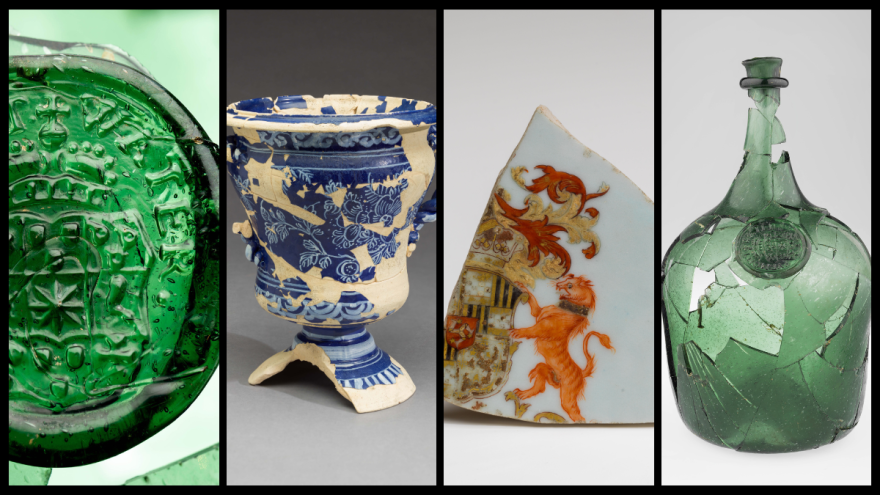Walking around Colonial Williamsburg, look for the baby baboon by the Palace Gardens, ditch the DASANI in favor of imported water from the spring of Pyrmont and imagine the Persian blue urn full of blooming flowers.
Thanks to the newest exhibition opening Sept. 7 at the DeWitt Wallace Decorative Arts Museum, one of the Art Museums of Colonial Williamsburg, visitors can experience history in a new way. "Worlds Collide: Archaeology and Global Trade in Williamsburg," a collection of 225 artifacts, presents a global view of the capital of the Virginia Colony.
A walk through the Margaret Moore Hall Gallery reveals punch bowls and plates, buckles, buttons and wig curlers; Spanish coins and Chinese porcelain, as well as remains from a juvenile baboon; a glass water bottle from Germany; and a stunning urn deserving of its own spotlight.
The artifacts, mostly unearthed close to the museum, are tangible reminders offering historical details of how people lived in the 17th and 18th centuries. They make the exhibition an ideal orientation for a walking tour afterward that could spark conversation.
"This exhibition conveys the global nature of life in Williamsburg and arms guests with knowledge, either after they've been in the historic area or before they've been to the historic area," said Jack Gary, executive director of archeology for Colonial Williamsburg. "Many of our guests might think of Colonial Williamsburg as parochial and very simple. Yet the people and ideas here come all over the world."
The exhibit, the first all-archaeological one mounted at the museums, challenges the thinking about Williamsburg to go beyond its heritage of weavers, blacksmiths and tailors. Its five themes are material goods, food, ideas, landscapes and people.
"Every single artifact lends itself to not just one story but several," said Sean Devlin, senior curator of archaeological collections, who has spent years researching and selecting the items on view. Devlin chose from the 60 million objects the museums have stored.
Earl of Dunmore John Murray, the last royal governor of Virginia, owned a piece of a Chinese export porcelain platter that likely traveled the farthest of any of the pieces on view.
It is decorated with the family coat of arms and likely abandoned when he fled Williamsburg in 1775, the end of royal authority in Virginia.
The exhibition also contains immigrant ingredients – staples such as cherry, peach and apricot pits that Europeans and Africans brought with them and incorporated into the local agricultural landscape.
One of the largest pieces, a Persian urn with a rope-twisted handle found near the oldest building on the William & Mary campus, is well-patched thanks to a yearlong effort made possible by the museum receiving a Kress Conservation Fellowship. It was one of six nationally administered grants by the Foundation for Advancement in Conservation.
"With tin glaze earthenware and because of the way it was produced, often the glaze detaches from the body in the ground," said Kate McEnroe, conservator of archaeological materials at The Colonial Williamsburg Foundation. "But with this urn the scale is way beyond what we typically see, over 70% detachment. Because it's so rare, it's a really important piece and it was important to try to reattach many of the fragments."
The urn was likely a decorative piece from an outdoor garden, which was made in England, inspired by the cobalt-colored Persian tiles and ceramics from Turkey.
"It really is the star of the show," Devlin said.
Colonial Williamsburg visitors will soon be able to learn more about the discovery side of archaeological research as construction efforts nearby continue toward the 2026 opening of the Campbell Archaeology Center.
"Worlds Collide" will remain on view through Jan. 2, 2027 at the Art Museums of Williamsburg. For more information and tickets, visit Art Museums of Williamsburg online.

